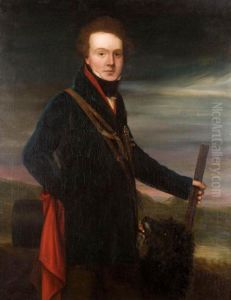George Watson Hewitt Paintings
George Watson Hewitt was an American architect, born in the year 1841 in Philadelphia, Pennsylvania. Hewitt is perhaps best known for his partnership with Frank Furness in the influential architectural firm Furness & Hewitt, which operated in Philadelphia during the latter half of the 19th century. This partnership was active during a period often referred to as the Gilded Age, a time when American architecture was evolving rapidly, and Philadelphia was burgeoning as an industrial and cultural center.
Hewitt's architectural education began under the tutelage of John Notman, a prominent architect who is credited with introducing the Italianate style to America. After working with Notman, Hewitt joined forces with Furness in 1867, and they collaborated on several significant buildings that blended Victorian, Gothic, and other eclectic styles. Their partnership lasted until 1875, when they decided to go their separate ways.
After the dissolution of Furness & Hewitt, George Hewitt continued his architectural practice with his brother W.D. Hewitt, forming the firm G.W. & W.D. Hewitt. This new partnership was responsible for designing many residential, commercial, and institutional buildings. They were known for their skillful use of the Queen Anne and Colonial Revival styles, which were popular at the time. Among their notable works were the Bellevue-Stratford Hotel and the residences along the 1800 block of Rittenhouse Square in Philadelphia.
Hewitt's influence extended beyond his architectural practice. He was an active member of the Philadelphia Chapter of the American Institute of Architects (AIA) and contributed to the development of the profession in the region. Throughout his career, he mentored young architects and promoted architectural education, which helped shape the next generation of architects.
George Watson Hewitt's work left a lasting imprint on the built environment of Philadelphia, and his contributions to the field of architecture were recognized by his peers. Although not as widely known today as some of his contemporaries, his work remains an important part of the architectural history of Philadelphia and the United States. Hewitt passed away in 1916, leaving behind a legacy of craftsmanship and design that continued to influence American architecture well into the 20th century.
